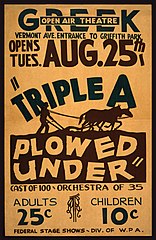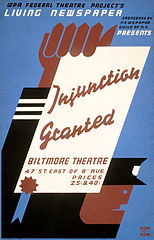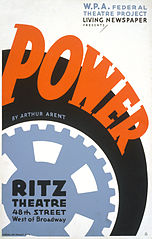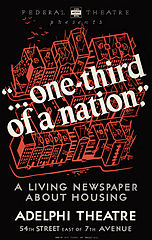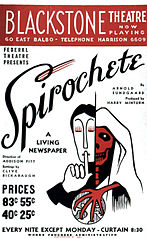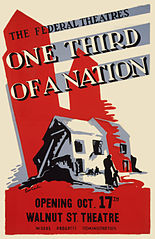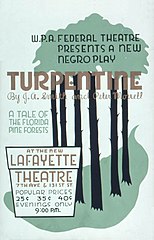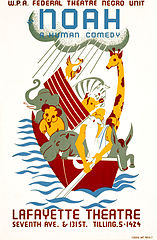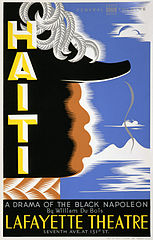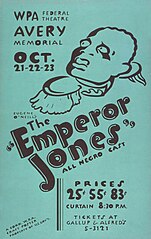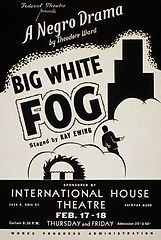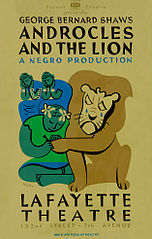
Federal Theatre Project
The Federal Theatre Project (FTP; 1935–1939) was a theatre program established during the Great Depression as part of the New Deal to fund live artistic performances and entertainment programs in the United States. It was one of five Federal Project Number One projects sponsored by the Works Progress Administration, created not as a cultural activity but as a relief measure to employ artists, writers, directors, and theater workers. National director Hallie Flanagan shaped the FTP into a federation of regional theaters that created relevant art, encouraged experimentation in new forms and techniques, and made it possible for millions of Americans to see live theatre for the first time.[1] Although The Federal Theatre project consumed only 0.5% of the allocated budget from the WPA and was widely considered a commercial and critical success, the project became a source of heated political contention. Congress responded to the project's racial integration and accusations of Communist infiltration and cancelled its funding effective June 30, 1939.[2][3] One month before the project's end, drama critic Brooks Atkinson summarized: "Although the Federal Theatre is far from perfect, it has kept an average of ten thousand people employed on work that has helped to lift the dead weight from the lives of millions of Americans. It has been the best friend the theatre as an institution has ever had in this country."[4]
Federal Dance Project[edit]
The Federal Dance Project (FDP) was a short-lived entity that was ultimately absorbed into the Federal Theater Project.[16] Dancer Helen Tamiris was the central figure of the FDP, which existed as an independent entity from January 1936 until October 1937.[16]
Cultural references[edit]
A fictionalized view of the Federal Theatre Project is presented in the 1999 film Cradle Will Rock, in which Cherry Jones portrays Hallie Flanagan.[21]
